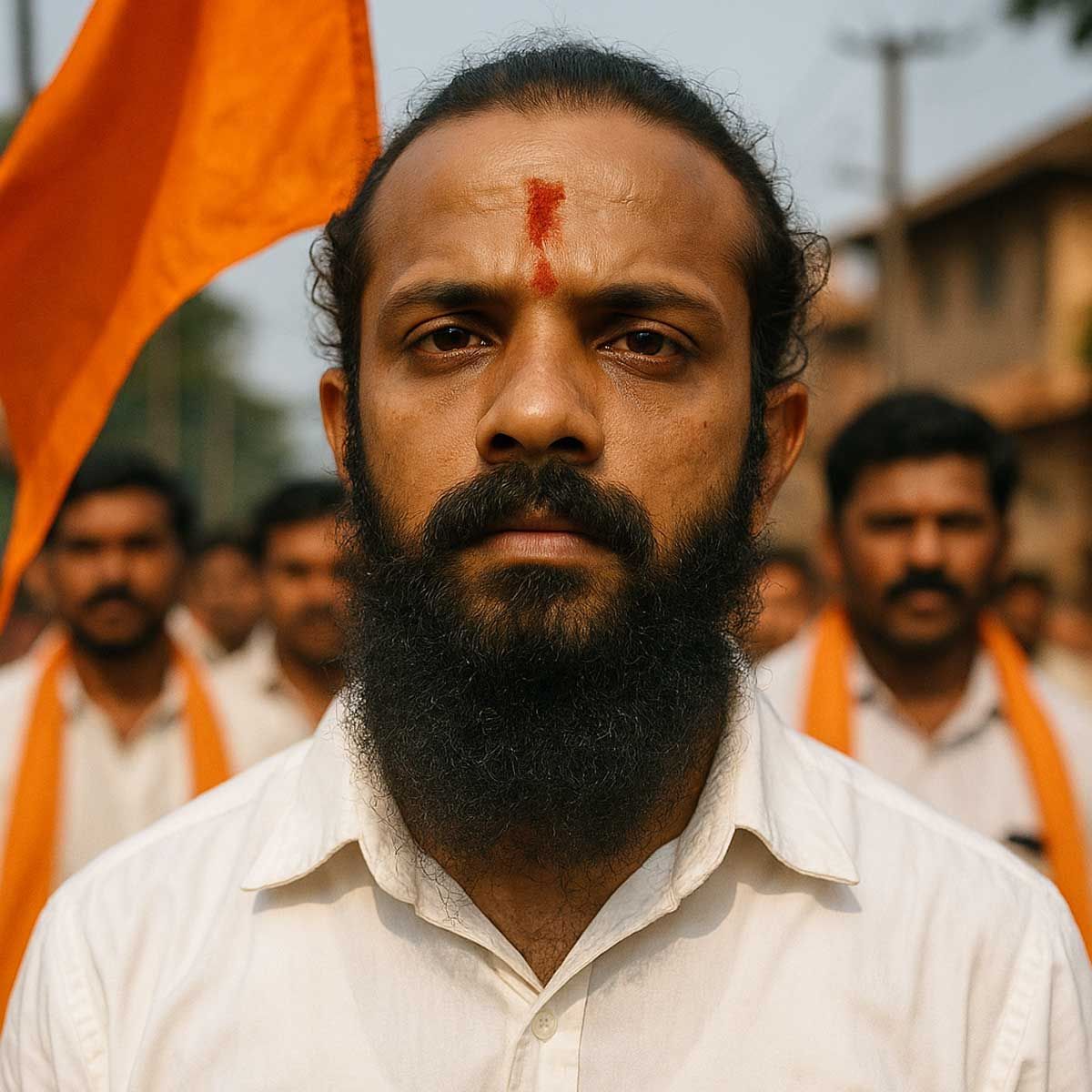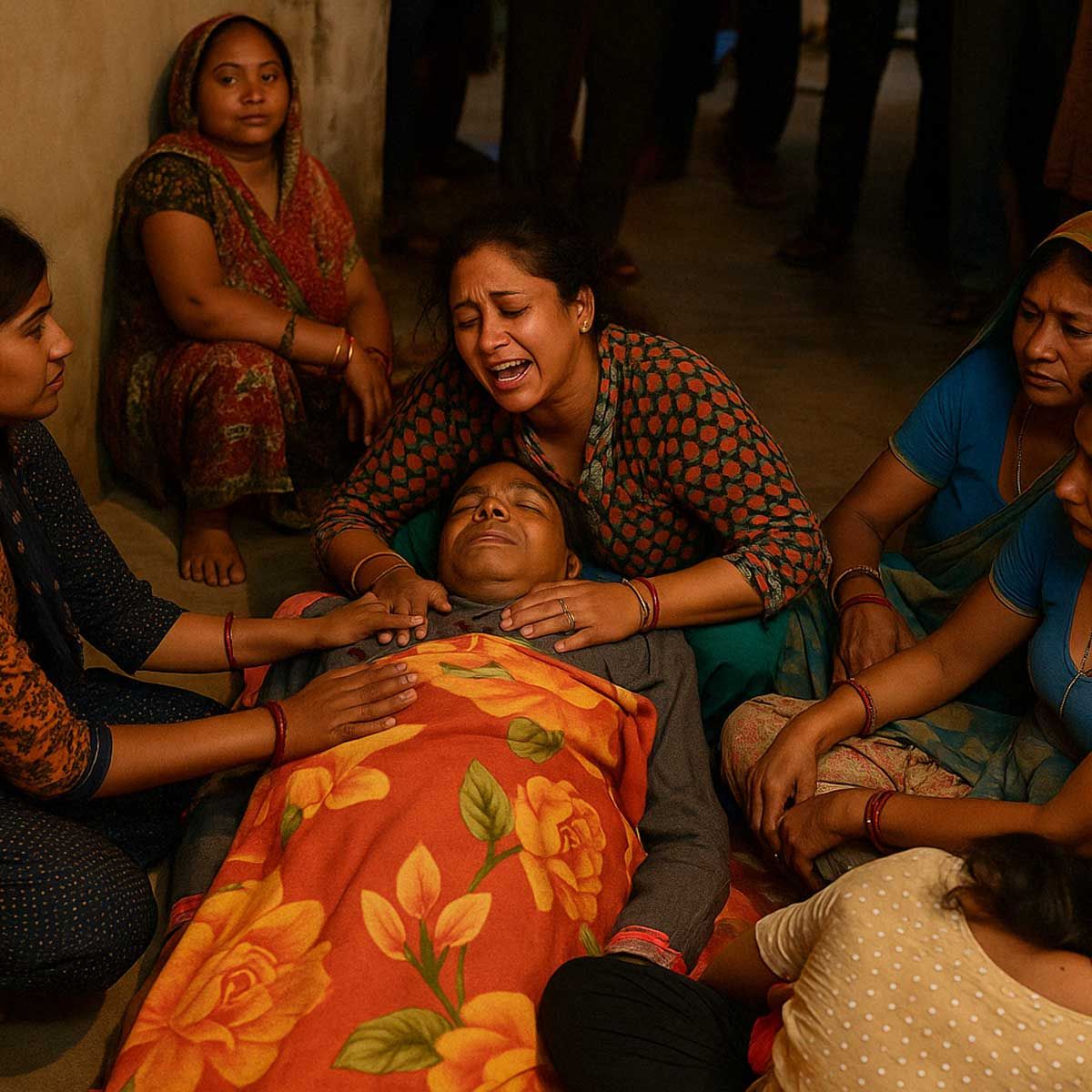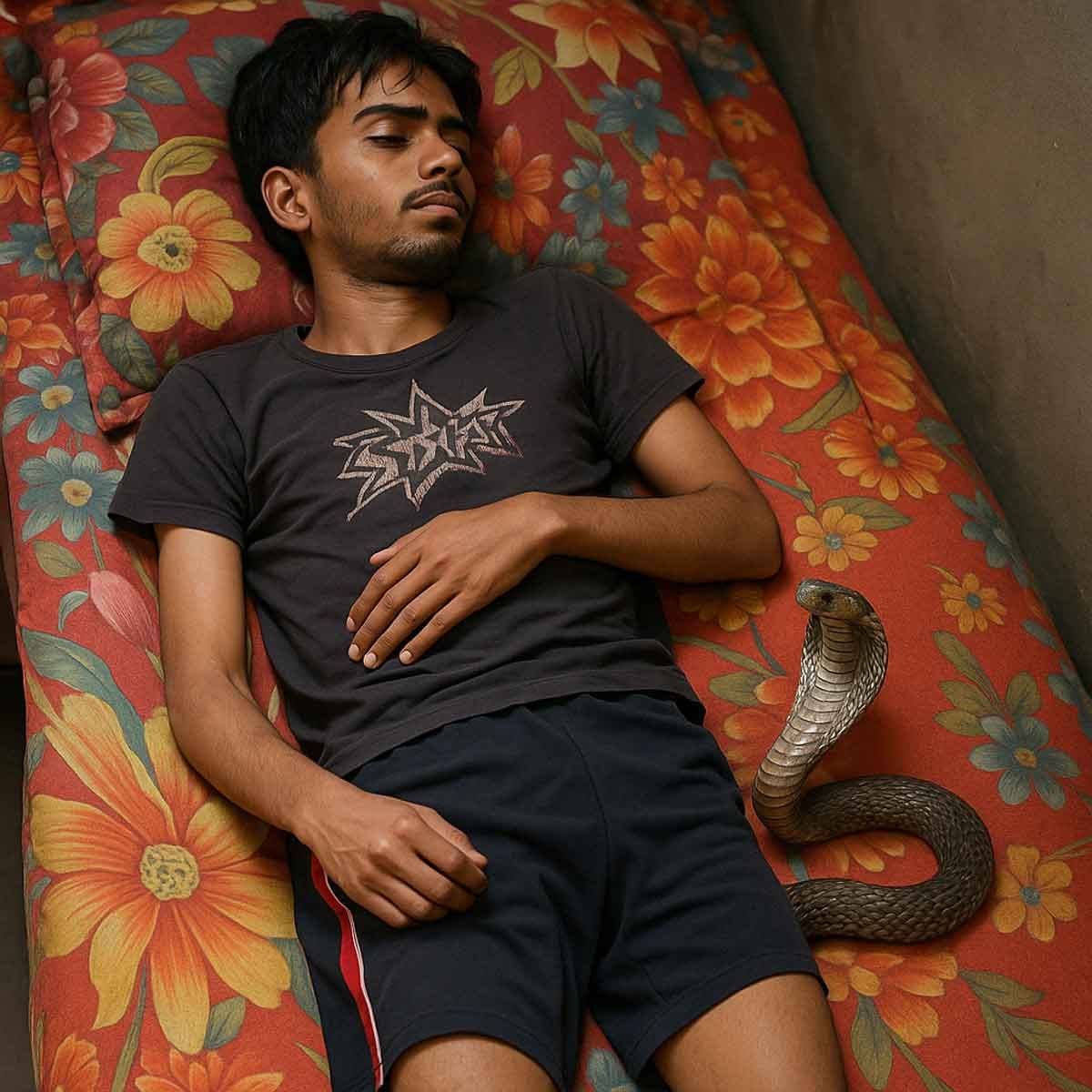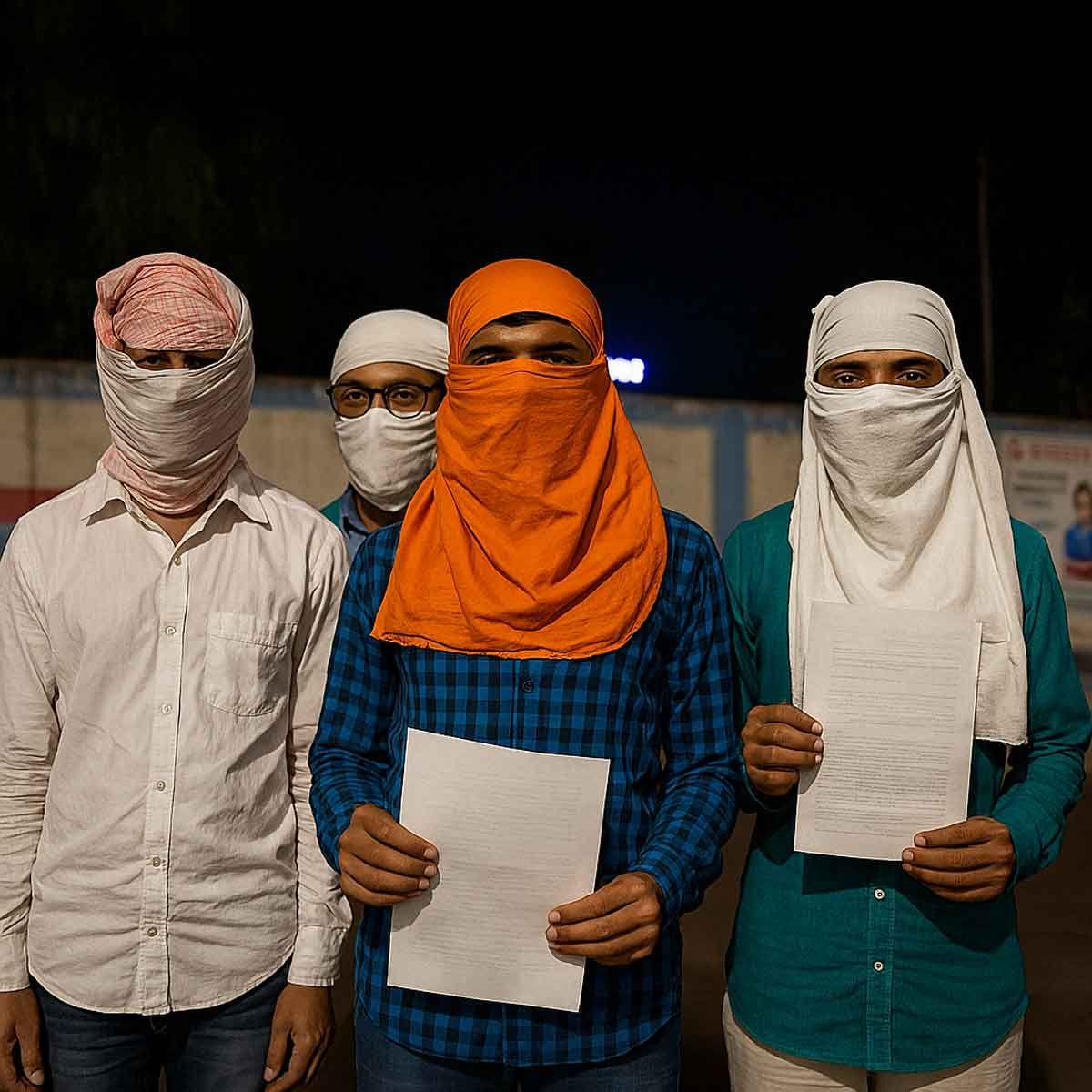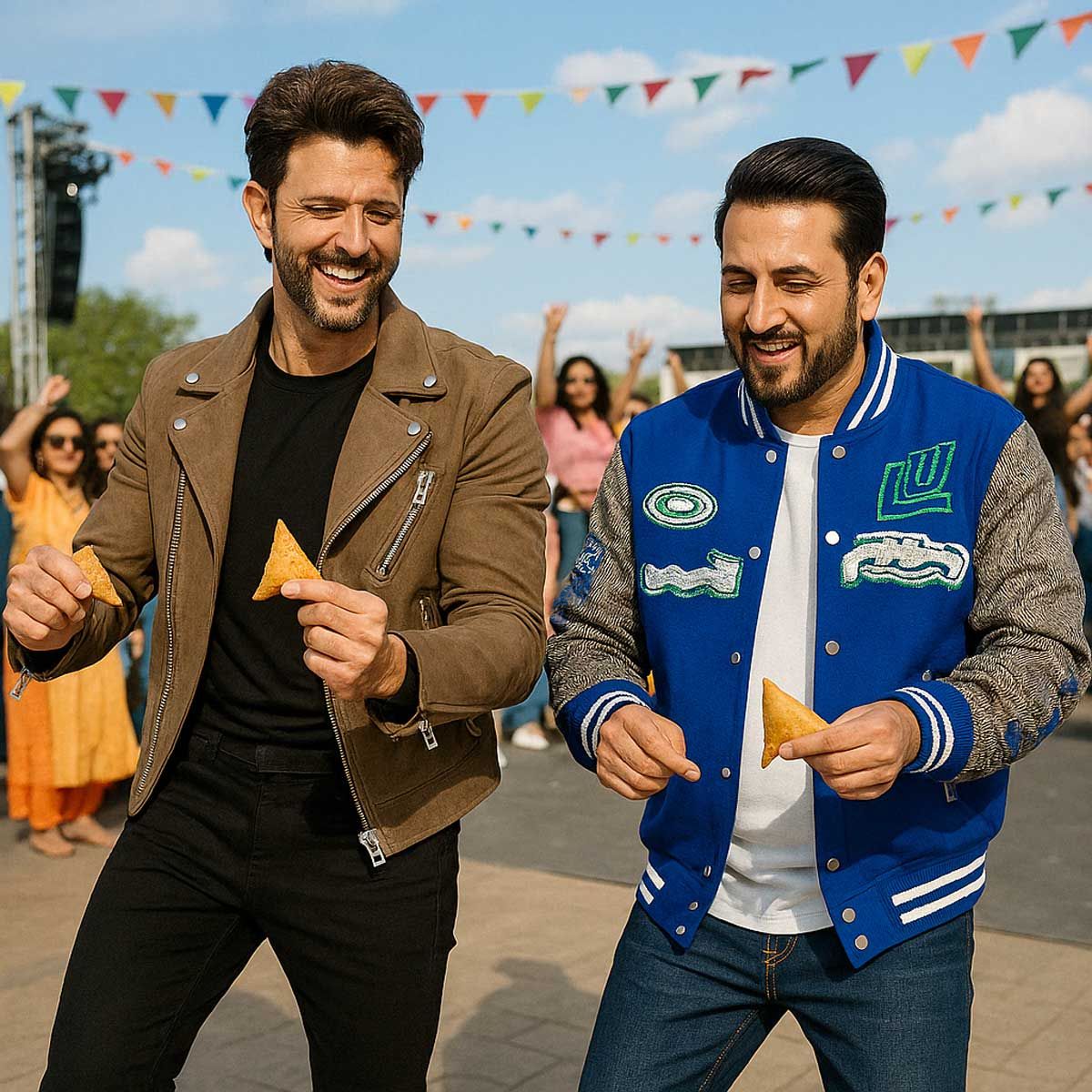More Coverage
Twitter Coverage
Satyaagrah
Written on
Satyaagrah
Written on
Satyaagrah
Written on
Satyaagrah
Written on
Satyaagrah
Written on
JOIN SATYAAGRAH SOCIAL MEDIA
"Famous: most accessible to the arrows of malice & slander": PetaIndia donated a mechanical elephant worth ₹5 lakhs to Irinjadappilly Sree Krishna Temple in Thrissur, but fails to uphold compassion for animals when it comes to festivals of other religions
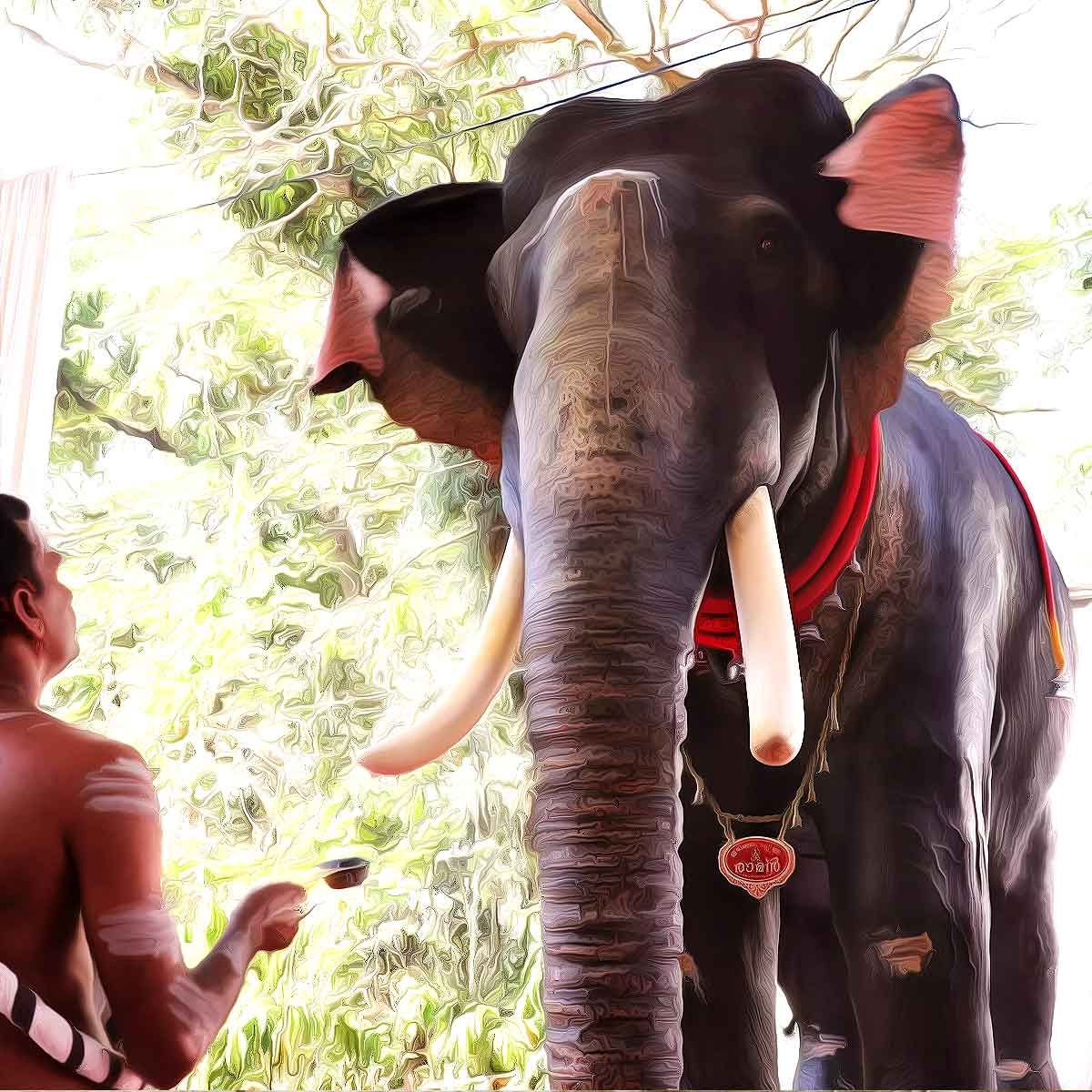
The People for Ethical Treatment of Animals (PETA) India along with actor Parvathy Thiruvothu donated a mechanical elephant worth Rs 5 lakhs to Irinjadappilly Sree Krishna Temple in Thrissur. The PETA indicated that deploying real animals for temple rituals was causing harm to the animals as they needed to stay away from their natural habitat and undergo trauma in captivity.
|
“JUMBO NEWS! Kerala’s Irinjadappilly Sree Krishna Temple will use a lifelike mechanical elephant to perform rituals, allowing real elephants to remain with their families in nature,” the official Twitter handle of PETA India wrote. The handle also shared a video in which it showed the real elephants being allegedly beaten by the animal trainers.
Irinjadappilly Sree Krishna Temple priest Rajkumar Namboothiri also welcomed the initiative and stated that real worship is to protect all forms of life created by God. “Allowing elephants to stay in nature should be the real way of revering the elephant God, Lord Ganesha,” he added.
Meanwhile, PETA also stated that elephants are highly social beings and that they need to live in forests with their families for their well-being. It also encouraged the local temples to use mechanical elephants and send real elephants to the forests.
The mechanised ‘animal’ named ‘Irinjadappilly Raman’ weighs 800 kg and is around 11-foot-tall. According to the reports, it underwent the traditional ceremony of offering animals to the temple gods, known as ‘Nadayiruthal’. At the occasion, the animal was dressed in decorative covering to resemble the installation of an actual elephant.
The robot’s trunk, which has five electric motors, can be controlled by the operator via a switch. The project of ‘cruelty-free festivals’, which promotes the rehabilitation of ‘captive’ elephants, was praised by the animal rights organization. The machine, which can hold five people at once, was made by Thrissur-based craftsmen who are also working on launching elephant statues for the Dubai Shopping Festival.
|
“Indian film actor Parvathy Thiruvothu sent her support to PETA India in presenting this innovative solution that will spare real elephants a life in which they are taken away from their families and forest homes, deprived of everything that is natural and important to them, and kept constantly chained, lame, and lonely,” PETA said in a statement.
It also included data from the Heritage Animal Task Force showing that elephants released from captivity killed roughly 526 people in Kerala over a 15-year period, and asked everyone to petition state chief minister Pinarayi Vijayan to outlaw the commercial usage of the animal.
According to a statement made by temple priest Rajkumar Namboothiri and cited by Indian Express, the temple decided against using captive elephants due to the animals’ high costs and an increase in violent animal occurrences. He urged other temples to do the same.
Notably, throughout the years, PETA India has come under fire for its hypocrisy and use of double standards in regard to its stance on animal abuse. It fails to uphold the same compassion for animals when it comes to festivals of other religions. It has been slammed by many for its own cruelty to animals it claims to ‘rescue’ and conspicuously silent on rampant cattle and goat slaughter during Bakra Eid.
On the contrary, PETA India has regularly indulged in shaming Hindu festivals and how they are celebrated. Earlier during Holi, it had appealed to Hindus to stop throwing colors at animals and opt for vegan thandai. It had also asked Hindus to stop bursting crackers during Diwali as it might ‘scare’ the animals.
The issue of Temple elephants has been a topic of controversy in recent years, especially due to animal rights organizations like PETA and activists who oppose the idea of elephants being kept in captivity. It is notable here that the procession of majestic elephants is the key attraction of the Thrissur Pooram festival and the deities from each temple are placed on the back of elephants. The elephants move among the devotees, offering Darshan and blessings. As elephants are a part of Hindu religious symbolism as representatives of wealth and power, many temples have their own pet elephants.
The temple elephants also have their own fandom and are loved by the locals immensely. Thrissur Raman, a 63-year-old male elephant from the Thechikottukavu temple, popularly known as the Thrissur Raman, is one of the largest living Asian elephants. He has a dedicated fandom and is the main attraction in the Thrissur festival. However, in recent years, Raman’s health has deteriorated and he is currently almost blind. Recently, he got aggressive during a festival in Palakkad and attacked his own mahout.
Incidents of temple elephants going aggressive fuel the discussion and controversies around keeping the majestic creatures in captivity, to be deployed in rituals and festivals under noise and massive crowds, triggering them into aggressive behavior.
|
Temple Elephants: Cruelty Or Protection?
Animals and birds take up a significant portion of our Hindu Puranas and Itihasas. Out of all birds and animals, the elephant is one animal that finds repetitive mention. Starting with Lord Ganesha, whom Hindus pray to before starting any endeavor, elephants are found across all our epics and stories. It includes Airavata- the vahana (mode of movement) of Indra; Gajendra- the bhakta (devotee) of Lord Narayana; Ashwathama- the elephant that dies in the Kurukshetra war; so on and so forth.
Even in our contemporary world, elephants have an integral part to play in Hinduism. As we see when we enter most big temples, elephants are present, and they play a role in the festivals for the deity. Every temple has a specific space dedicated to the elephant where it is bathed, fed, and rested. Ancient temples were built along with a portion of the complex dedicated to elephants. While these are well-known things, there are some other unknown aspects of temple elephants. Why do we have the practice of temple elephants in the first place? Which breed of elephants do temples select? What gender of elephants are preferred by temples predominantly?
Speaking about why we have elephants in temples, Kulithalai Ramalingam, a saivaite religious preacher said, “According to the Agamas, we have elephants for two purposes. Firstly, the agamas say that the water for abhisheka (thirumanjanam) for the deity is to be brought from the river or tank to the temple by placing it on the elephant. Secondly, in bigger temples with 5 Prakaras, the deity is to be brought in circumambulation around the temple on the elephant, during nityotsavam (daily festival). This also extends to when the deity comes out of the temple during festivals.” In essence, the temple elephant is an essential part of the day-to-day activities of the temple deity.
While talking about Bob-cut Sengamalam, the elephant of the Mannargudi Rajagopalaswamy Temple, Rajagopal, the Mahout said, “She came to our temple in the year 2002, when she was 14. Now, she is 34 years old. Before her, we had Senior Sengamalam who lived for 86 years as the temple elephant and passed away due to old age. Junior Sengamalam was donated to our temple by Ms Sasikala’s brother, Mr Dhivakaran.” Rajagopal has been associated with the temple elephant since his birth, but he has taken it up as a profession only after his father passed away in 2018.
|
In most temples, elephants are donated and not bought. So, the breed and gender of the elephant are not pre-fixed, as the temple cannot demand a specific breed from the person donating. In Mannargudi, the elephants have been females. However, this differs from temple to temple. But generally, mostly only the Indian breed of elephants is taken up for temple service. “Temples prefer female elephants as they’re easier to manage during their musth period than their male counterparts,” Rajagopal mentioned.
Considering the size of an elephant, the food intake of the animal is also beyond imagination. For example, Sengamalam generally takes 5 Kg of Venn Pongal in the morning and night. In the afternoon, she is given 250 Kg of cattle feed including reed, coconut leaves, and hay. “Per day cost of the cattle feed is ₹200. This is sponsored and provided by the HR&CE department,” he said.
While mahouts have been taking quite good care of their elephants, many have gone to court against this practice, asking for a complete ban on this tradition of temple elephants. Even recently, the Tamil Nadu forest department constituted a seven-member team of experts to investigate whether temple elephants in the state are being subjected to harassment and whether these elephants are in a position to be held in captivity. The argument placed by these animal activists and the forest department is that the elephants are not taken care of properly, and are subjected to loneliness and torture. Therefore they have been trying to seek a ban on this tradition.
Speaking about the so-called torture of temple elephants, Saraswathi, an animal activist who has been fighting for the preservation of this practice, said, “You would assume that we have elephants in temples because of the Agamas of the temples. Well, while that may be true, the practice of temple elephants was initiated to protect wild elephants from fatality and death. A recent study says that 130 wild elephants died in 15 months in the Western Ghats, due to casualties like electrocution and railway accidents. However, in temples, elephants are taken very good care of, with appropriate feeding and healthcare facilities. It is important to understand that elephants are rather protected through this practice than tortured.”
Many who have asked for a ban on this practice also argued that the elephants are subjected to loneliness, and therefore they should not be separated from their habitat. When Rajagopal was asked about this, he said, “How can Sengamalam ever be lonely when I am always with her? She is like my elder daughter, not just any elephant. If she falls sick, I won’t even feel like eating or sleeping. That is the bonding I have with her. She keeps talking to me, and rightfully asks me whatever she requires, like water, rest or food. So, Sengamalam is never lonely.”
About loneliness, Saraswathi added, “A temple elephant will never feel alone because it will not only be surrounded by the mahout, but also by the devotees of the temple at all times. For the elephant, the Mahout and his assistant are its mother and father. They will have an irreplaceable bonding from a very young age.”
|
Those who seek a ban on this tradition also cite that elephants are mostly tortured when trained. Speaking about how he trained Sengamalam, Rajagopal said, “Elephants are trained using the positive-reward system. There are a few command words which we ensure that the elephants are familiarised with. For Sengamalam, I used jaggery as a reward, and every time she obeyed a command, I would reward her with jaggery. So, even now, when she perfectly obeys my command, she gets her piece of jaggery. We mahouts rarely use violence. Maximum of elephants will get trained using the reward-system itself.”
Many have also said that a complete ban on the practice of temple elephants is not possible, as it is a deeply rooted cultural practice. “The reason why many animal welfare organisations are fighting this practice is that they want to end this domestication of elephants and instead build sanctuaries for them. They want to make money from these sanctuaries by making these elephants a matter of exhibition. The elephants are very safe now in temples, and they will be tortured if they’re put in sanctuaries. Therefore, this practice should not be stopped,” Saraswathi concluded.
While the courts have still not decided whether the domestication of elephants for temples should be continued or not, Mahouts and some animal activists still strongly believe that this practice should continue. For mahouts and priests in temples, the elephants are like the deity himself/herself. They do not differentiate between humans and the elephant, and in fact, take more care of the animal as they create a special bond over the years. If this practice is prohibited, then it would mean that another Hindu tradition is attacked and ceased existence
References:
 Support Us
Support Us
Satyagraha was born from the heart of our land, with an undying aim to unveil the true essence of Bharat. It seeks to illuminate the hidden tales of our valiant freedom fighters and the rich chronicles that haven't yet sung their complete melody in the mainstream.
While platforms like NDTV and 'The Wire' effortlessly garner funds under the banner of safeguarding democracy, we at Satyagraha walk a different path. Our strength and resonance come from you. In this journey to weave a stronger Bharat, every little contribution amplifies our voice. Let's come together, contribute as you can, and champion the true spirit of our nation.
 |  |  |
| ICICI Bank of Satyaagrah | Razorpay Bank of Satyaagrah | PayPal Bank of Satyaagrah - For International Payments |
If all above doesn't work, then try the LINK below:
Please share the article on other platforms
DISCLAIMER: The author is solely responsible for the views expressed in this article. The author carries the responsibility for citing and/or licensing of images utilized within the text. The website also frequently uses non-commercial images for representational purposes only in line with the article. We are not responsible for the authenticity of such images. If some images have a copyright issue, we request the person/entity to contact us at This email address is being protected from spambots. You need JavaScript enabled to view it. and we will take the necessary actions to resolve the issue.
Related Articles
- "Will you dissolve all idols?" Tamil Nadu police ask Ganesha murti maker Murugan, as Vinayagar Chaturthi nears, DMK's crackdown on artisans, sparks outrage for crippling local economy and distressing Sanatana Dharma practitioners… Condemnable!
- Shibli College Student Union President Abdur Rahman says, "Will trample 80 crore Hindus under my feet": arrested for inciting violence against BJP spokesperson Nupur Sharma and Hindu community over allegations of blasphemy
- After strong reactions from the public on the decision to change the logo of the prestigious institute IIM-Ahmedabad, now institute backtracks that only minor changes in color rendition and fonts
- During the Durga Visarjan in Bahraich, UP, Muslims objected to DJ music, leading to stone-pelting from their side, Ramgopal Mishra, recently married, was shot 24 times; eyewitnesses allege attackers used the police lathi-charge to kill him, blaming police
- "When life gets hard, try to remember: the life you complain about is only a dream to some people": Islamists forcefully occupied houses of Santal Hindu community in Dinajpur of Bangladesh and forced them to spend their days in other people’s backyards
- In a noble charitable practice St. Francis Sevadham Christian ‘orphanage’ forced Hindu minors consume beef and read the bible
- Poster boy on the cover of ISIS magazine Lawyer Mehmood Pracha comes to the rescue of DU professor Ratan Lal who was arrested for comments against Shivling found in Kashi
- 15 May to 21 May 2022 - Hindus under attack: Bulletin roundup of persecution, discrimination, and hate crimes against Hindus
- Dravidianists Periyar Ambedkar Study Circle organises janeu cutting skits in New Jersey: How Hindumisia propaganda is flourishing in US
- "Oops, Jindal did it again": Jindal Uni discusses ‘Destroy Ram Mandir, erect Mosque’ during a talk on ‘Brahmanical Hindutva Fascism’ igniting a controversy with anti-Hindu rhetoric, protests against CAA & Pulwama tributes underscore deep ideological rifts
- In a self-revealing blunder, The New York Times attempts to target Akshardham Mahamandir in the US with unsubstantiated 'caste discrimination' claims, conveniently overlooking evidence of artisans being enticed with green cards to fabricate tales
- Young Hindu girl died in Kerala of mass Shawarma food poisoning, 52 hospitalized: Owner Anas and migrant Nepali cook arrested, history of selling contaminated meat to Hindus
- "Karauli attack on Hindu bike rally was pre-planned on the eve of Hindu New Year, Muslims shut shops entirely and left the locality just before the communal violence started": Another mass Hindu exodus looms large
- Former Muslim Vice President Hamid Ansari and actress Swara Bhasker share dais with Jamaat-e-Islami linked IAMC which lobbied to get India blacklisted and is infamous for targeting India many times for its sovereign decisions
- Prashant Bhushan and Lawyers write to CJI over Dharma Sansad speech while whitewashing hate crimes committed against Hindus
















